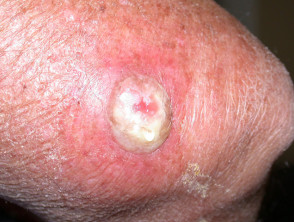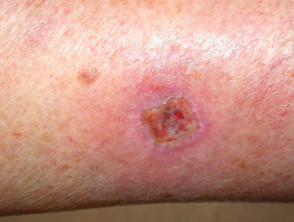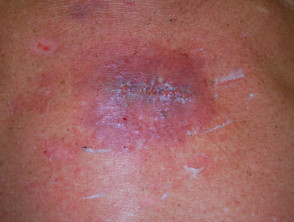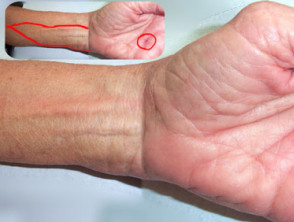What is a wound infection?
Wound infection is defined by the US Centre for Disease Control and Prevention (CDC) as surgical site infection (SSI). This is further defined as:
- Superficial incisional SSI – infection involves only skin and subcutaneous tissue of incision.
- Deep incisional SSI — infection involves deep tissues, such as facial and muscle layers.
- Organ/space SSI — infection involves any part of the anatomy in organs and spaces other than the incision, which was opened or manipulated during the operation.
Although this definition of wound infection is restricted to those arising from a surgical incision, a broader and more general definition would be an infection of a wound caused by physical injury of the skin as a result of penetrating trauma from plants, animals, guns, knives or other objects. Wounds break the continuity of the skin and allow organisms to gain access to tissues and cause infection.
Infections arising in surgical wounds are one of the most common hospital-acquired infections and are an important cause of morbidity and mortality. Hence, the focus of this article is on the recognition and management of surgical wound infections.
What defines a surgical wound infection?
A surgical wound/site infection is defined by the following criteria. Infection must occur within 30 days of the surgical operation, and at least one of the following must occur:
- Purulent discharge from the surgical site
- Purulent discharge from wound or drain placed in the wound
- Organisms isolated from the aseptically obtained wound culture
- Must be at least one of the signs and symptoms of infection — pain or tenderness, localised swelling, or redness/heat.
Other signs of wound infection include:
- Delayed healing not previously anticipated.
- Discolouration of tissues both within and at the wound margins.
- Abnormal smell coming from the wound site.
- Friable, bleeding granulation tissue despite appropriate care and management.
- Lymphangitis, a red line originating from the wound and leading to swollen tender lymph glands draining the affected area.
Surgical site infections do not include a stitch abscess, episiotomy infection, newborn circumcision scar, or infected thermal burn wound.
Wound infection
What causes a wound infection?
Wound infections are caused by the deposition and multiplication of microorganisms in the surgical site of a susceptible host. There are a number of ways microorganisms can get into wounds.
- Direct contact – transfer from surgical equipment or the hands of the surgeons or nurses
- Airborne dispersal – surrounding air contaminated with micro-organisms that deposit onto the wound
- Self-contamination – physical migration of the patient’s own endogenous flora which is present on the skin, mucous membranes or gastrointestinal tract to the surgical site.
The most common causative organisms associated with wound infections include Staphylococcus aureus/MRSA, Streptococcus pyogenes, Enterococci and Pseudomonas aeruginosa.
Contributing factors
General patient characteristics
- Age, obesity, malnutrition
- Endocrine and metabolic disorders
- Smoking
- Hypoxia/anaemia
- Malignant disease
- Immunosuppression.
Wound characteristics
- Nonviable tissue in the wound
- Foreign bodies
- Tissue ischaemia
- Haematoma formation.
Operative characteristics
- Poor surgical technique
- Long operation time (> 2 hours)
- Intraoperative contamination
- Prolonged preoperative stay
- Hypothermia.
What is the risk of wound infection?
The risk of wound infection varies with the type of surgery. Certain types of surgery carry a higher risk of contamination than others and have led to the following classification of surgical wounds.
Clean wound, for example, hernia repair
- Uninfected operative wound
- No acute inflammation
- No entry to internal organs
- No break in aseptic technique
Clean-contaminated wound, for example, an appendicectomy
- Opening to internal organ but minimal or no spillage of contents
- No evidence of infection or major break in aseptic technique
Contaminated wound, for example, colectomy due to obstruction
- Opening to internal organs with inflammation or spillage of contents
- A major break in aseptic technique
Dirty wound
- Purulent inflammation
- Intraperitoneal abscess formation or visceral perforation
How are wound infections prevented?
The goal of wound infection management is to prevent or minimise the risk of infection. The following factors or methods external to the patient are used to prevent infection.
Theatre environment and care of instruments
- Maintain positive pressure ventilation of operating theatre
- Laminar airflow in high-risk areas
- Sterilisation of surgical instruments, sutures etc according to guidelines
Surgical team members educated in aseptic technique
- Staff with infections excluded from duty
- Scrubbing up followed by appropriate sterile attire
Techniques applied to the patient to prevent wound infections include:
- Skin preparation
- Wound cleansing
- Antibiotic prophylaxis
- Good surgical technique.
Antiseptic wound cleansers are adequate for clean wounds or lightly contaminated wounds. Antibiotic prophylaxis may be indicated for clean-contaminated wounds and is usually recommended for contaminated wounds. Antibiotics for dirty wounds are part of the treatment because the infection is already established. When deciding on a prophylactic antibiotic consider the following:
- Use an antibiotic based on likely bacteria to cause infection
- An antibiotic should have good tissue penetration to reach wound involved
- Timing and duration of antibiotic – it is important that therapeutic concentrations are reached at the time of the incision, throughout the surgical procedure and ideally a few hours postoperatively.
Wound infection can complicate illness, cause anxiety, increase patient discomfort and lead to death. It is estimated that surgical wound infections result in an increased length of hospital stay by about 7–10 days. Hence the prevention and management of wound infection have a major impact on both patient health and health economics.



